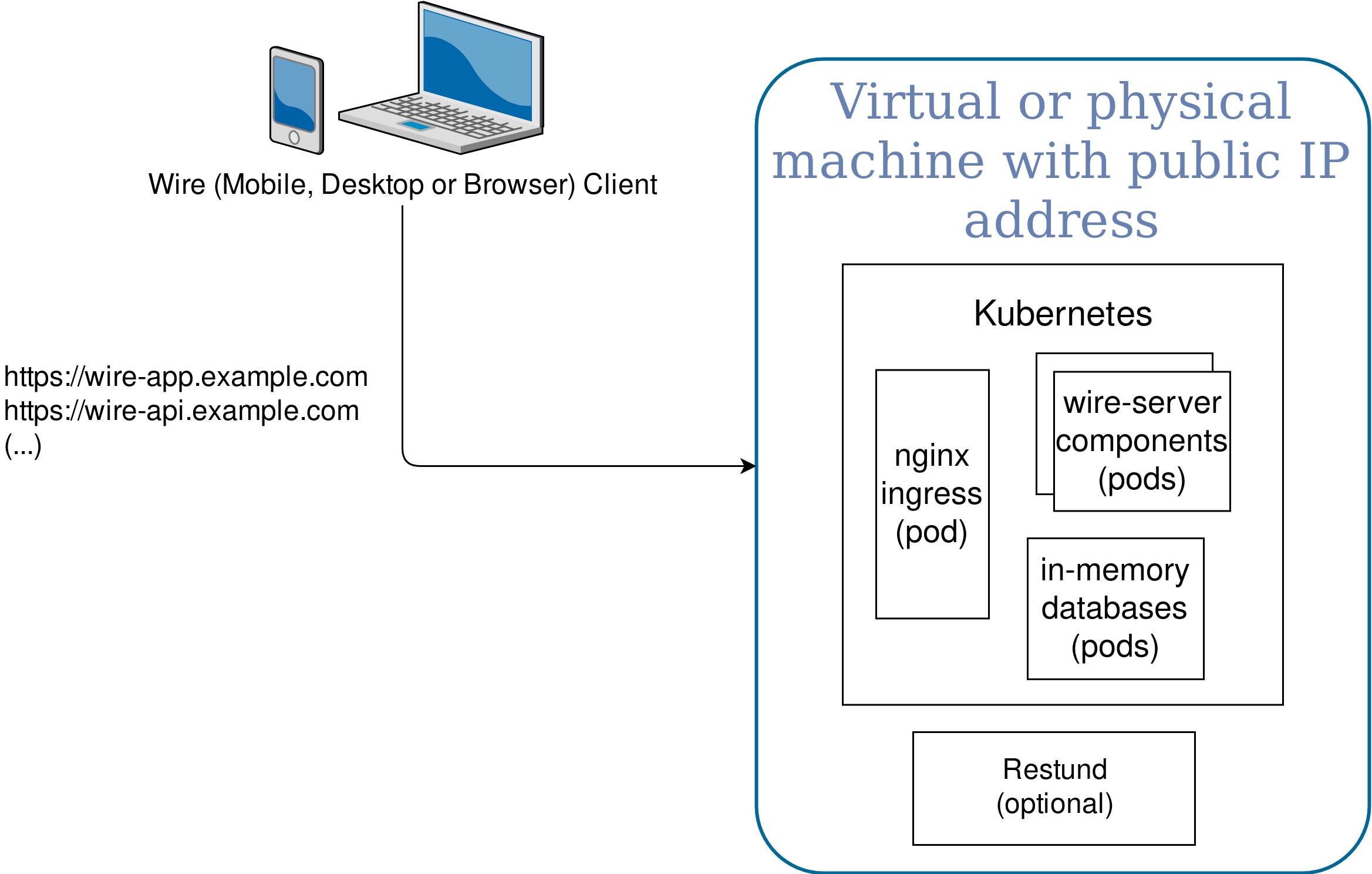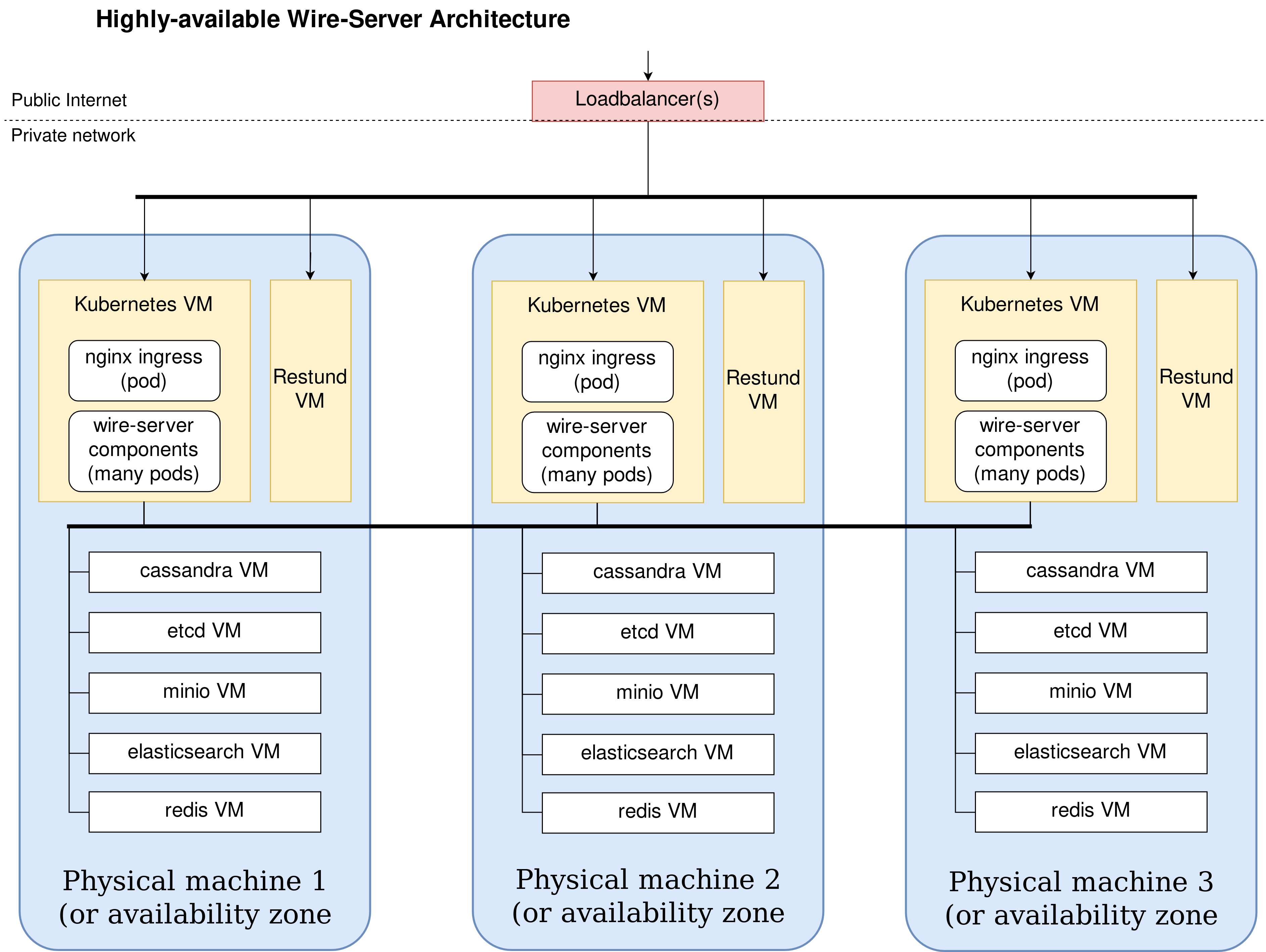Implementation plan¶
There are two types of implementation: demo and production.
Demo installation (trying functionality out)¶
Please note that there is no way to migrate data from a demo installation to a production installation - it is really meant as a way to try things out.
Please note your data will be in-memory only and may disappear at any given moment!
What you need:
a way to create DNS records for your domain name (e.g.
wire.example.com)a way to create SSL/TLS certificates for your domain name (to allow connecting via
https://)Either one of the following:
A kubernetes cluster (some cloud providers offer a managed kubernetes cluster these days).
One single virtual machine running ubuntu 16.04 or 18.04 with at least 20 GB of disk, 8 GB of memory, and 8 CPU cores.
A demo installation will look a bit like this:

Demo installation (1 VM)¶
Next steps for demo installation¶
If you already have a kubernetes cluster, your next step will be Installing wire-server (demo) components using helm, otherwise, your next step will be Installing kubernetes for a demo installation (on a single virtual machine)
Production installation (persistent data, high-availability)¶
What you need:
a way to create DNS records for your domain name (e.g.
wire.example.com)a way to create SSL/TLS certificates for your domain name (to allow connecting via
https://wire.example.com)A kubernetes cluster with at least 3 worker nodes and at least 3 etcd nodes (some cloud providers offer a managed kubernetes cluster these days)
minimum 17 virtual machines for components outside kubernetes (cassandra, minio, elasticsearch, redis, restund)
A recommended installation of Wire-server in any regular data centre, configured with high-availability will require the following virtual servers:
Name |
Amount |
CPU |
memory |
disk |
|---|---|---|---|---|
cassandra |
3 |
2 |
4 GB |
80 GB |
minio |
3 |
1 |
2 GB |
100 GB |
elasticsearch |
3 |
1 |
2 GB |
10 GB |
redis |
3 |
1 |
2 GB |
10 GB |
kubernetes |
3 |
4 |
8 GB |
20 GB |
restund |
2 |
1 |
2 GB |
10 GB |
A production installation will look a bit like this:

Production installation in High-Availability mode¶
If you use a private datacenter (not a cloud provider), the easiest is to have three physical servers, each with one virtual machine for each server component (cassandra, minio, elasticsearch, redis, kubernetes, restund)
It’s up to you how you create these VMs - kvm on a bare metal machine, VM on a cloud provider, etc. Make sure they run ubuntu 16.04 or 18.04.
Ensure that your VMs have IP addresses that do not change.
Next steps for high-available production installation¶
Your next step will be Installing kubernetes and databases on VMs with ansible